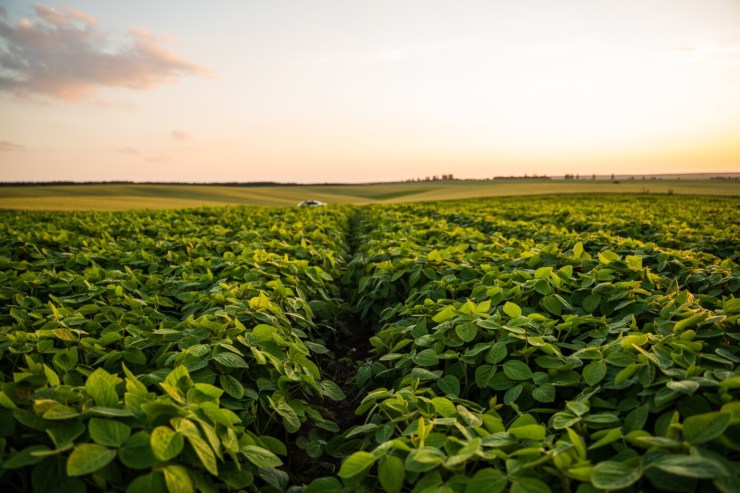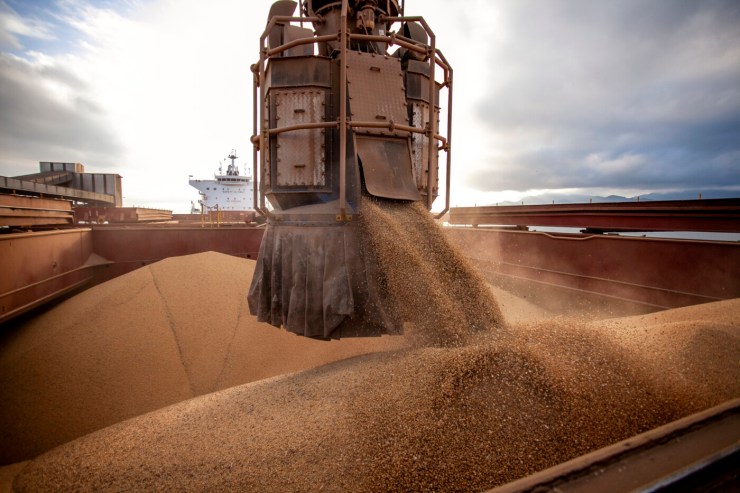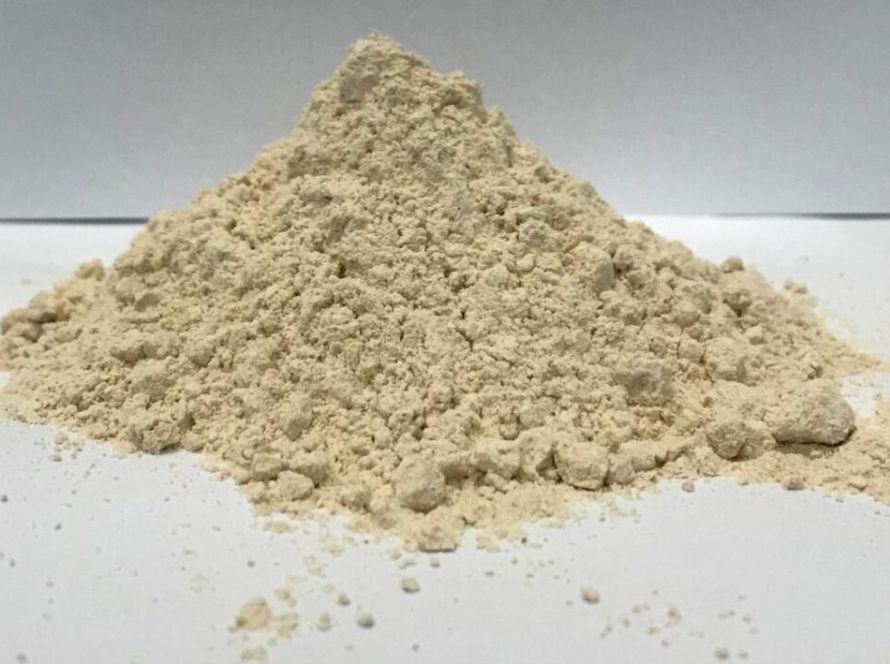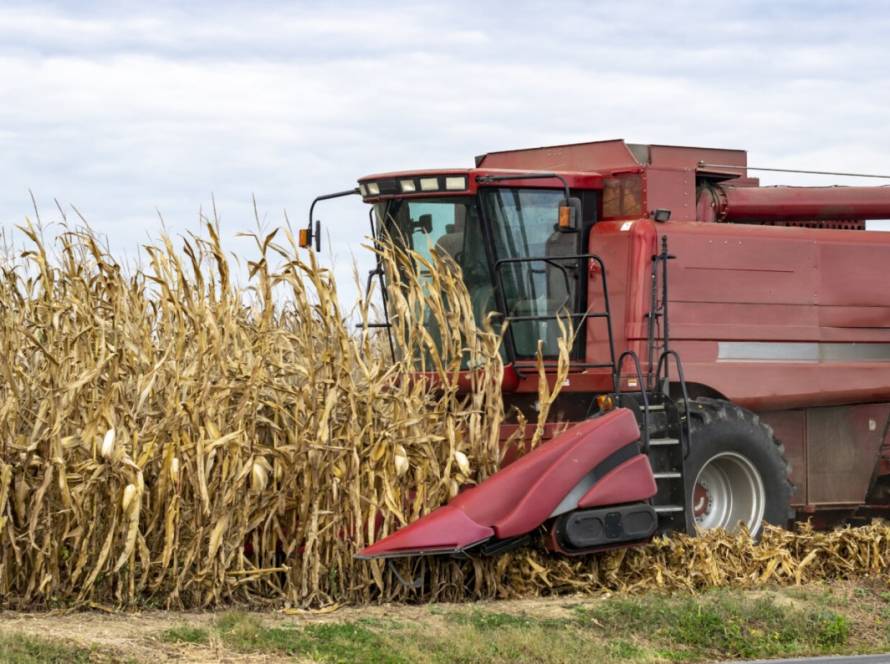With a pilot project in Paraná, the Agricultural Zoning of Climate Risk (Zarc) for soybean crops will also consider, starting with the next harvest, the adoption of good soil management practices that increase the volume of water available to the plants. Starting in August, producers who join the project will have access to differentiated subsidy percentages in rural insurance policies, depending on the level of management adopted on their property. The innovative proposal by the Ministry of Agriculture and Livestock (MAPA) and Embrapa in the Zarc Management Levels (ZarcNM) aims to help mitigate the climate risks faced by soybeans.
Normative Instruction No. 2 of 2025, which regulates ZarcNM, was published in the Official Gazette on July 9, following Resolution No. 107 of the Interministerial Steering Committee for Rural Insurance, which approved the pilot project's rules. This means that the adopted management system is included in the calculation for assessing the crop's climate risk. In this initial phase of the project, MAPA allocated R$ 8 million.

Photo: Shutterstock
According to Diego Melo de Almeida, director of the Ministry's Risk Management Department, the project embodies the evolution of the Agricultural Climate Risk Zoning (Zarc). "This is a path we've been pursuing with Embrapa for at least two years. The summer harvest will be the starting point, but we hope to continue refining the methodology and expanding the scope and allocation of resources for future harvests," he reveals.
Researcher José Renato Bouças Farias of Embrapa Soja (PR) says this update is crucial during periods of water scarcity, which currently represents the main cause of soybean production losses in Brazil. "ZarcNM demonstrates risk reduction through a well-conducted management strategy, providing crucial information for producers, agricultural planning activities, and rural insurance," explains Farias.
According to the scientist, adopting conservation practices is crucial to increasing water infiltration and reducing surface runoff, both common during heavy and large-volume rainfall. Along with other soil management practices, they promote greater water availability for plants.
The better the level of management, the higher the insurance subsidy
The researcher explains that ZarcNM will now consider four Management Levels (MLs), defined based on six indicators. The rural insurance subsidy percentages will increase according to the quality of management: 20% for areas classified as Management Level 1 (ML1), 25% for ML2, 30% for ML3, and 35% for ML4. Under the current PSR rules, the standard subsidy percentage for soybeans is 20%.
Based on field assessments conducted by Embrapa on 62 properties in Paraná and 201 sites in Mato Grosso do Sul, the classification methodology was validated. Farias explains that the second level of ZarcNM, NM2, represents the average soil management practices adopted in these states.
On the other hand, the following levels (NMs 3 and 4) require improvements in soil chemical, physical, and biological fertility through improved management practices. These practices increase water availability and thus reduce the risk of crop drought.
The NM1 classification, on the other hand, reveals inadequately managed areas, presenting limitations in the soil's physical, chemical, and biological properties and, consequently, a higher risk of losses due to water deficit. "Improved soil management, through proven effective techniques and practices, leads to a significant increase in crop productivity, a reduction in the risk of losses caused by drought conditions, and increased carbon sequestration in the soil. Furthermore, it promotes the conservation of both soil and water resources," explains Farias.

For the researcher, the adoption of management levels in Zarc's work allows for the delimitation of areas and identification of periods of lower climate risk for soybean cultivation in Brazil. Risk is considered not only due to the soil's textural composition but also due to the interaction with the level of adoption of different soil management practices.
Eduardo Monteiro, coordinator of the Embrapa Zarc Network and researcher at Embrapa Digital Agriculture (SP), adds that ZarcNM allows for a more accurate assessment of the risk associated with each management class. "This refinement can help identify opportunities to expand regions or growing seasons for production systems with higher management levels, with less risk," he adds.
The rural insurance program's differentiated subsidy mechanism, linked to the management level classification, also aims to encourage producers to adopt good practices and more productive and sustainable technologies, while also recognizing those who already do so. "The ZarcNM classification should help producers quickly diagnose their production system and identify key issues that, if corrected, can contribute to increased productivity," Monteiro explains.
Indicators
“The better the management and the longer the history of good practices, the better the physical, chemical, and biological properties of the soil, the higher the organic matter content, hydraulic redistribution, root system growth, and productivity,” Farias emphasizes.
In the researcher's assessment, the classification into management levels is based on objective and verifiable indicators, which enables the implementation of development mechanisms or incentives that promote improved soil management within agricultural policy programs.

The six indicators considered are: time without soil disturbance, percentage of pre-sowing soil cover (straw), crop diversification in the last three growing seasons, percentage of base saturation, calcium content, and percentage of aluminum saturation. In addition to the quantitative indicators, certain prerequisites must be met, such as contour or level seeding.
Detailed information on the classification methodology can be found in the Normative Instruction of the Ministry of Agriculture and Livestock.
How it will work
The objective of the pilot project for the 2025/2026 harvest in Paraná is to test the operational flow of ZarcNM in the PSR, linked to differentiated subsidies. Based on the criteria and indicators defined in the methodology, the classification of the management level of the property or plot will be calculated automatically through a digital platform developed by Embrapa Digital Agriculture, the Management Level Information System (SINM).
It will operate with three sets of information. The first refers to data for property identification and area history, such as information on mechanized operations, soil interventions, and pre-sowing cultivation, which are important for classification. The second set consists of information obtained through remote sensing and geoprocessing, used to verify the area. Finally, the third includes the results of routine soil analyses, but with geolocation of the samples.
Once the production area information is recorded, the SINM generates a management level classification. The insurer then submits the proposal to the Rural Insurance Premium Subsidy Program (PSR), which will assign the subsidy percentage corresponding to the level achieved.
Information will be entered into the system by pre-accredited operators, such as cooperatives, insurance companies, soil analysis laboratories, geoprocessing companies, public technical assistance agencies, and other interested parties. Teams from Embrapa and Mapa have been holding technical meetings with representatives of cooperatives and service providers to present the ZarcNM pilot project and answer questions about the operational workflow.
Monteiro believes that cooperatives play a key role in this phase of implementing the ZarcNM pilot project in the PSR. "Some cooperatives already have programs to train producers and monitor crop management quality. They have contact with farmers who adopt good practices, so they can act as facilitators," he explains.
One of the cooperatives that will participate in the pilot project's implementation phase is Cocamar. "We always strive to be at the forefront of innovation in agribusiness, especially when these innovations benefit our members. Therefore, participating in the ZarcNM pilot project, in partnership with Embrapa, will be an extremely valuable experience. We selected 20 cooperative members who are leaders in good agricultural practices to implement the proposal and test the new methodology based on management levels," says Cocamar's technical executive manager, Renato Watanabe.

Photo: Jaelson Lucas
According to Watanabe, one of the main challenges was carefully classifying producers within these levels, as each farm situation is unique. Even so, the expectation is that the results will be very positive. "ZarcNM brings a new perspective to climate risk analysis and paves the way for fairer and more efficient public policies, particularly regarding access to credit and rural insurance. We believe this new approach will encourage the adoption of more sustainable practices and strengthen crop resilience in the face of climate challenges."
SINM operates through Application Programming Interfaces (APIs), a set of protocols that allow communication between systems automatically and without direct data manipulation. "We are building an alternative path to facilitate differentiated subsidies for those who demonstrate good practices, in which traceability, transparency, and verifiability of information are essential for all parties," emphasizes Monteiro.
Those wishing to become accredited to provide services to the production sector as system operators must demonstrate technical capacity and, in the case of laboratories, must also have passed one of the soil analysis proficiency programs. "Currently, we are seeking to facilitate collaboration between cooperatives, insurance companies, remote sensing companies, and laboratories to offer integrated solutions, facilitating the collection and recording of data necessary for management classification," explains Monteiro.
SINM operator candidates can consult the technical documentation and request accreditation through a form available at this link.





